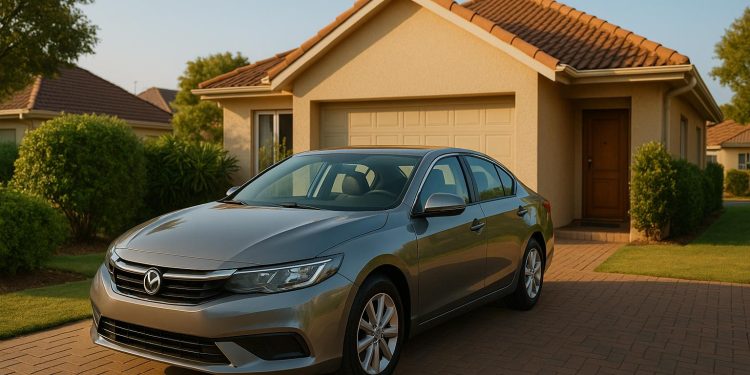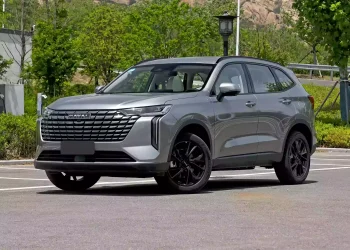Finding the right car insurance in South Africa can feel overwhelming, but it doesn’t have to be. Here’s what you need to know to secure the best deal:
- Understand Your Options: Choose between four main types of coverage – Comprehensive (most coverage), Third-Party, Fire & Theft (mid-level), Third-Party Only (basic), and Pay-As-You-Drive (usage-based). Each type suits different needs and budgets.
- Compare Providers: Don’t just look at premiums – check coverage details, excess amounts, customer service, and added perks like roadside assistance or cashback programs.
- Save on Premiums: Bundle policies, install safety devices, maintain a clean driving record, and negotiate with insurers to reduce costs.
- Consider Local Risks: Your location impacts premiums. Urban areas may cost more due to higher traffic and theft rates, while rural areas face different risks like poor roads or limited repair facilities.
- Tailored Features: South African insurers offer extras like hail damage coverage, cross-border protection, and hijacking-related benefits.
The key is balancing cost with coverage. Take the time to compare policies carefully, and don’t rush – cheaper isn’t always better. Make sure your insurance fits your specific needs and circumstances.
Factors That Influence Insurance Premiums | Here’s How To Negotiate Lower Premiums
Types of Car Insurance Available in South Africa
Finding the right car insurance in South Africa means matching your specific needs and budget to the policies available. Insurers offer a variety of options, each designed to address different circumstances. Here’s a breakdown to help you figure out which type suits you best.
Comprehensive Insurance
This is the most extensive coverage, offering protection against accidents, theft, hijacking, fire, hail, flooding, and third-party liability. If your car is financed, comprehensive insurance is often a requirement. It also addresses risks like hijacking, which can be a serious concern in South Africa.
Beyond the basics, comprehensive policies often come with perks such as emergency roadside assistance, rental car coverage while your vehicle is being repaired, and sometimes even coverage for personal items stolen from your car. However, these benefits vary between insurers, so it’s worth comparing what’s included in each policy.
Third-Party, Fire & Theft Insurance
This type of policy strikes a balance between cost and coverage. It includes third-party liability as well as protection against fire and theft of your vehicle. If you cause an accident, it covers damages to the other party’s property, and it also protects you financially if your car is stolen or damaged by fire. However, it doesn’t cover your own vehicle if it’s damaged in an accident.
This option is often ideal for owners of older vehicles where comprehensive insurance might not be financially practical. If your car has significantly depreciated in value, paying high premiums for full coverage may not make sense. Third-party, fire & theft insurance provides essential protection without the higher cost, making it a smart choice for many.
In areas with high crime rates, theft coverage is particularly important. Even if your car isn’t worth much, losing it to theft could still leave you in a tough financial spot.
Third-Party Only Insurance
This is the most basic policy and meets the minimum legal requirement for driving in South Africa. It only covers damages or injuries you cause to other people or their property. Your own car, however, isn’t covered under this policy.
Third-party only insurance is best suited for drivers of older or low-value vehicles. It’s also an option if you’re working with a tight budget. That said, the lack of protection for your own car means you’re exposed to significant financial risks if something happens to your vehicle.
Pay-As-You-Drive Insurance
Pay-as-you-drive insurance calculates your premiums based on how much you actually drive, using telematics devices or smartphone apps to track your mileage. Instead of a fixed monthly premium, you pay per kilometer, and some insurers even consider driving behaviors like hard braking or speeding.
This type of policy is perfect for people who drive infrequently. If you work from home, rely on public transportation for your daily commute, or only take your car out occasionally, this could save you a lot of money. Some insurers also offer discounts to safe drivers or those who drive during low-risk times.
However, pay-as-you-drive insurance requires you to agree to telematics tracking, which monitors your driving habits. If you’re uncomfortable with this level of monitoring or drive long distances regularly, a traditional fixed-premium policy might be a better fit.
Understanding these options can make choosing the right insurance much easier, ensuring you find coverage that aligns with both your needs and your budget.
How to Compare Car Insurance Providers in South Africa
Once you’ve familiarized yourself with your insurance options, the next step is comparing providers to find the deal that fits you best. But don’t get stuck on just the price tag – there’s more to a good insurance policy than the lowest premium. By carefully weighing several factors, you can find a plan that balances cost and coverage, giving you the protection you need without breaking the bank.
Key Features to Consider
Start with the premium, but don’t stop there. To make a fair comparison, request quotes for the same coverage levels from different insurers. Many companies offer online tools to help you estimate costs quickly.
Coverage details and exclusions can vary widely. For instance, some insurers might include extras like emergency roadside assistance as part of the policy, while others may charge extra for these perks. Pay close attention to the excess (or deductible) amounts. A lower premium might sound appealing, but it could come with a higher excess, leaving you with more out-of-pocket expenses if you ever need to file a claim.
Customer service is another key factor, especially when it comes to filing claims. Look for insurers with 24/7 claim support, digital tracking, and a reputation for handling claims efficiently and fairly.
Additional perks can also sweeten the deal. Some insurers offer cashback programs or discounts on vehicle services, which can add real value to your policy. Extra coverage options, like identity theft protection or personal accident cover, might also be worth considering, depending on your needs.
Finally, don’t overlook the insurer’s financial health. A company with strong financial backing and a solid credit rating is better equipped to handle claims, especially larger ones, giving you peace of mind in the long run.
Using Comparison Tables to Simplify Choices
Creating a comparison table can help you break down your options in a clear and organized way. Start by listing basic details like the insurer’s name, monthly premium, excess amount, and key inclusions. Then, add columns for specific benefits that matter to you – maybe roadside assistance, car hire coverage, or international driving protection.
Make sure you’re comparing policies with identical coverage levels. Sometimes, a slightly higher premium comes with benefits that make the overall package more worthwhile.
Digital comparison tools can make this process easier, but keep in mind that not every insurer participates in these platforms. Some companies prefer direct interaction with customers, and reaching out to them directly might even land you a better deal. Always double-check that the policy details are accurate and reflect the most current terms.
It’s also helpful to create different comparison tables for various scenarios. For example, your needs might change if you move to a new area, switch jobs, or buy a different car. Evaluating policies with these changes in mind can give you a better sense of how well they’ll adapt to your situation.
And don’t wait until the last minute – compare rates well before your current policy expires. You might even snag a promotional discount by planning ahead.
sbb-itb-09752ea
Ways to Save Money on Car Insurance Premiums
Lowering your car insurance costs doesn’t mean you have to skimp on coverage. South African drivers can take advantage of several practical strategies to reduce premiums while keeping their policies solid. These tips build on the basics of comparing and choosing the right policy.
Bundling Policies for Discounts
One straightforward way to save is by bundling. If you combine your car insurance with other policies – like home, life, or business insurance – you might qualify for a discount. Many insurers offer reduced rates for holding multiple policies with them. It’s worth asking your provider about these bundled deals.
Installing Safety Devices
Upgrading your car’s safety features can also lead to savings. Insurers often provide discounts for vehicles equipped with approved safety devices. Items like tracking systems, dashcams, immobilizers, or advanced alarm systems not only protect your car but may also lower your premiums. Be sure to check with your insurer to see which devices qualify.
Maintaining a Good Driving Record
Your driving record plays a big role in determining your premiums. A clean record without accidents or claims often earns you no-claims bonuses or discounted rates. If your record isn’t spotless, you can still explore options with insurers that cater to higher-risk drivers, though these policies typically come with higher costs.
Negotiating with Insurers
Don’t shy away from negotiating with your insurer. During your annual policy review, highlight your loyalty or consider adjusting factors like your excess or payment terms to secure a better rate. Armed with knowledge about current market rates, you might uncover extra discounts or perks to make your coverage more affordable.
Local Factors for South African Drivers
Driving in South Africa comes with its own set of challenges, shaped by the country’s diverse geography, weather patterns, and crime statistics. Understanding these factors can help you choose insurance that fits your needs while potentially saving money.
Risk Factors Based on Location
Your location plays a major role in determining your insurance premiums. For example, urban areas like Johannesburg, Cape Town, and Durban tend to have higher rates due to increased traffic congestion and elevated crime levels. These cities see more frequent claims, and insurers reflect that risk in their pricing.
Vehicle theft and hijacking hotspots are another critical consideration. Regions like parts of Gauteng, KwaZulu-Natal, and the Western Cape experience higher crime rates, which directly impact comprehensive coverage costs. If you live in or regularly drive through these areas, you’ll likely face steeper premiums.
For rural drivers, the risks are different. While crime might not be as pressing, rural areas often lack quick access to emergency services and repair facilities, which can drive up claim-related expenses. Additionally, rural road conditions – think unpaved surfaces, livestock crossings, and poor lighting – pose unique hazards that increase accident risks.
Weather also varies significantly across South Africa and impacts insurance costs. For instance, the Highveld region, home to cities like Johannesburg and Pretoria, is known for intense hailstorms that can cause severe vehicle damage. Coastal areas, on the other hand, face risks like flooding during heavy rains, while strong winds in some regions can lead to damage from flying debris. These localized weather risks not only influence premiums but also shape how insurers structure their policies and repair services.
Approved Repair Networks Explained
To address these challenges, insurers rely on approved repair networks to provide reliable and efficient service. These partnerships ensure that claims are processed quickly and repairs meet quality standards. Major insurers often collaborate with specific auto body shops and dealerships across the country, offering benefits like guaranteed workmanship and competitive pricing.
Knowing which repair facilities are part of your insurer’s network can save you time and stress. While some insurers boast extensive networks with multiple options in major cities, others may have fewer choices, particularly in smaller towns. This is especially important if you frequently travel or live in areas with limited service providers.
Sometimes, out-of-network repairs are unavoidable, such as in remote locations or for specialized vehicles. Understanding your policy’s terms for these situations can prevent surprise expenses. Some insurers allow out-of-network repairs but may require pre-approval or impose different deductibles.
The quality of repair providers also varies by insurer. While some focus on premium facilities that use original manufacturer parts, others prioritize cost-effective options that might involve aftermarket components. These differences can influence both your premium and the outcome of your claims.
Policies Designed for South African Needs
South African insurers tailor their policies to address the country’s unique driving risks, offering features that go beyond generic international models.
Hijacking and theft protection is a prime example. Beyond covering vehicle loss, some policies include benefits like temporary accommodation if you’re stranded, trauma counseling, and personal safety provisions. These additions reflect the reality that vehicle crime in South Africa often involves more than just property damage.
In regions like the Highveld, hail damage coverage has become increasingly relevant. Some insurers now offer specialized hail protection with lower deductibles or even guaranteed replacement instead of repair. Given the frequency and severity of hailstorms, this type of coverage can be a smart investment.
For those who frequently travel to neighboring countries, cross-border coverage is essential. Standard policies often exclude incidents outside South Africa, but specialized options ensure you’re protected in places like Botswana or Namibia without needing temporary add-ons.
Lastly, insurers are adapting to local economic challenges by providing flexible payment options. These might include payment holidays during tough times, premiums that adjust with economic conditions, or graduated payment structures. Such flexibility ensures you can maintain coverage even when finances are tight.
Conclusion: Your Path to the Best Insurance Deal
Finding the right car insurance in South Africa is all about striking a balance between cost and coverage. Start by evaluating your specific needs and weighing what matters most – affordability or comprehensive protection. This approach will guide you toward a policy that truly fits.
Taking the time to compare quotes carefully can lead to noticeable savings. But don’t just focus on the numbers – dig into the details of each policy. Regional factors, like where you live, can also influence your premiums, so consider how location impacts your coverage requirements. Look out for ways to save, such as discounts or negotiating better rates, to keep your expenses in check.
It’s worth noting that the cheapest policy isn’t always the smartest choice. Aim for a plan that blends solid coverage, reliable service, and a fair price, ensuring you’re protected without unnecessary stress. And as your circumstances change, make it a habit to review your coverage to ensure it continues to meet your needs.
FAQs
What should I consider when deciding between comprehensive and third-party, fire & theft car insurance in South Africa?
When choosing between comprehensive and third-party, fire & theft car insurance in South Africa, it’s important to weigh your budget, your car’s value, and the coverage you need.
Comprehensive insurance offers the broadest protection. It covers damage to your car, theft, vandalism, and natural disasters. If you drive a high-value vehicle or want maximum protection, this is the way to go.
Third-party, fire & theft insurance, on the other hand, is a more budget-friendly option. It covers damage to other people’s property, as well as fire and theft of your own car. However, it won’t cover damage to your vehicle. This makes it a practical choice for older or less expensive cars, or if you’re aiming to lower your monthly premiums while maintaining some level of protection.
The key is to find a balance between what you’re willing to pay in premiums and the financial risks you’re prepared to take on.
How does where I live in South Africa affect my car insurance costs and coverage options?
Where you live in South Africa plays a big role in determining your car insurance costs and the type of coverage that suits you best. If you’re in an urban area or a region with higher crime rates or poor road conditions, expect to pay more for insurance. For instance, provinces like Limpopo often see higher average premiums compared to the Western Cape, which benefits from lower crime rates and better-maintained roads.
On the flip side, living in areas with good road infrastructure and fewer risks can mean more affordable insurance options. When picking a policy, think about the specific challenges in your area and aim for a plan that strikes the right balance between affordability and coverage tailored to your location.
What are the pros and cons of choosing pay-as-you-drive car insurance in South Africa?
Pay-as-you-drive (PAYD) car insurance is an appealing choice for South African drivers who don’t spend much time on the road. The main advantage? It can save low-mileage drivers money since premiums are tied to how far you drive. Plus, the use of telematics tracking often promotes safer driving habits.
That said, there are some downsides to weigh. If you end up driving more than planned, you might face extra charges. And for some, the tracking technology could feel like an invasion of privacy. This type of insurance isn’t ideal for drivers who rack up a lot of miles or have unpredictable travel patterns.
In short, PAYD is a good fit for careful, low-mileage drivers looking to cut insurance costs. But if your driving habits don’t align, it might not be the right option for you.
Related Blog Posts
- Car insurance prices in South Africa
- How to Slash Your Car Insurance Costs in South Africa (Up to 30%)
- Comprehensive car insurance in South Africa: What you need to know in 2025
- Cost of comprehensive car insurance in South Africa: What to expect





